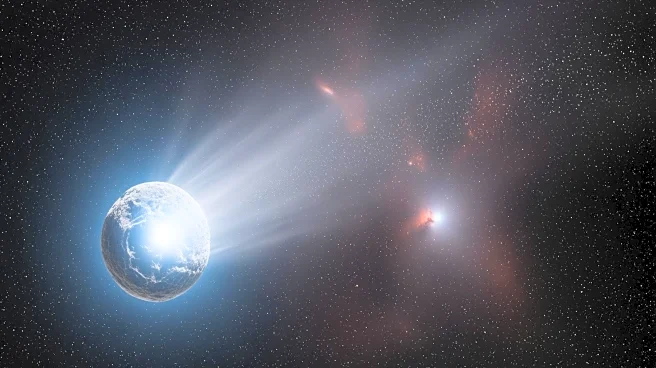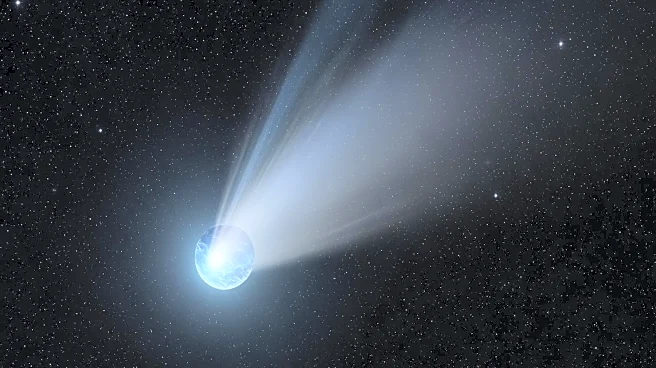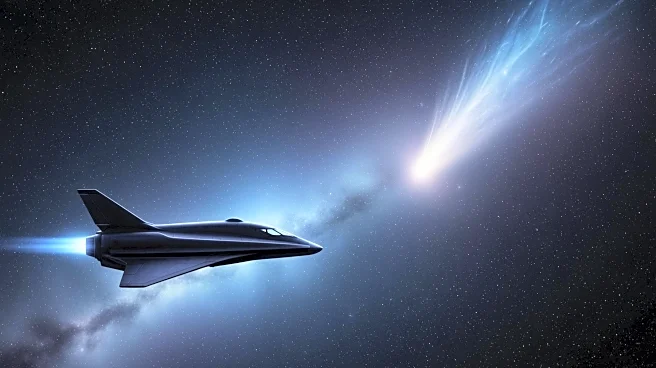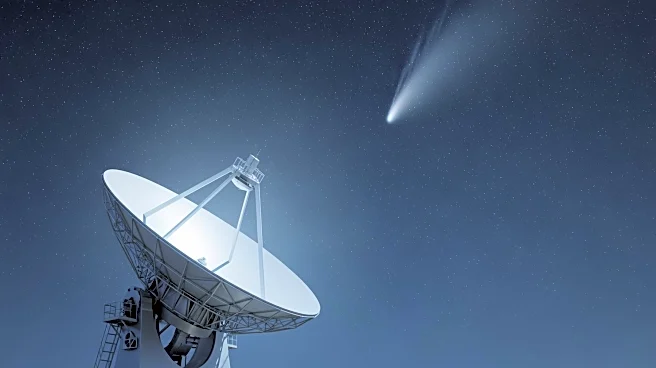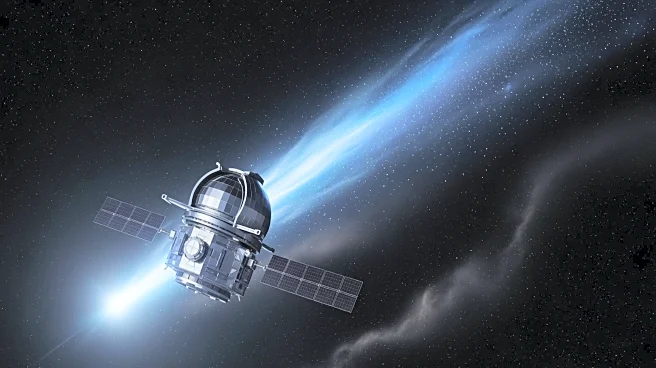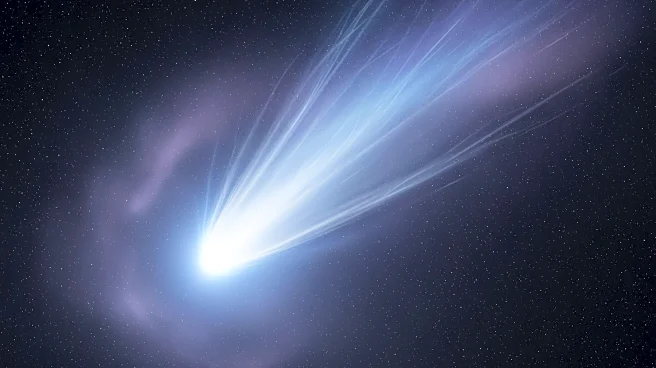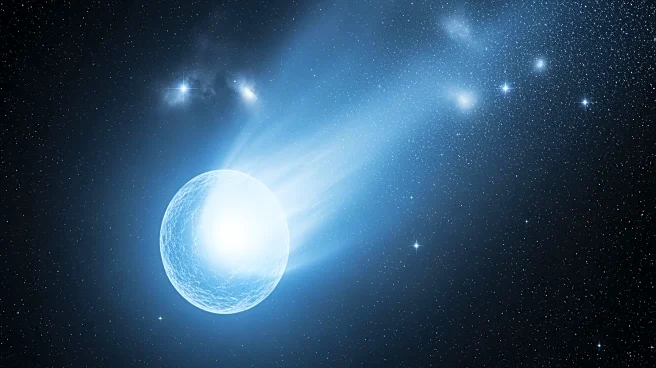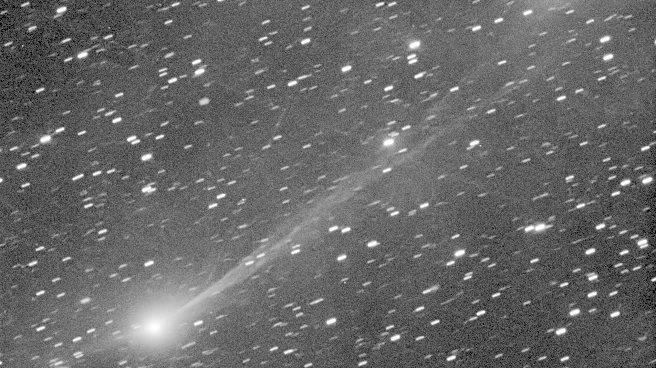What's Happening?
NASA has released high-resolution images of the interstellar comet 3I/ATLAS, captured by the Mars Reconnaissance Orbiter. This comet, only the third known object to originate from outside the solar system,
is being closely monitored by telescopes worldwide. The images, delayed due to a government shutdown, are now available for public analysis. Observations from various spacecraft, including the Mars Atmosphere and Volatile Evolution (MAVEN) and the European Space Agency’s ExoMars Trace Gas Orbiter, have provided detailed data on the comet's trajectory and characteristics. The comet is approaching its closest point to Earth on December 19th, and amateur astronomers are actively observing its evolving tail.
Why It's Important?
The study of interstellar comet 3I/ATLAS is significant for understanding planetary system formation and development. These objects are considered 'frozen fossils' that offer insights into the early solar system. The comet's behavior, including its multiple tails and potential non-gravitational forces, is being analyzed to refine models of cometary activity. The public release of data encourages widespread scientific engagement and analysis, potentially leading to new discoveries about interstellar objects. The comet's approach to Earth provides a unique opportunity for observation and study, contributing to the broader field of astronomy and planetary science.
What's Next?
As the comet nears its closest approach to Earth, further observations are expected to refine understanding of its size, composition, and behavior. Scientists are particularly interested in the gases being ejected from the comet, with previous observations indicating high levels of carbon dioxide. Continued monitoring will help determine the comet's water production and other characteristics. The data collected will aid in quantifying the sizes of interstellar objects and improve predictions for future observations. The scientific community is poised to analyze the incoming data, which could lead to new insights into the nature of interstellar comets.
Beyond the Headlines
The study of 3I/ATLAS also touches on broader themes in astronomy, such as the search for extraterrestrial life and the nature of interstellar travel. While some have speculated about the comet being alien technology, the scientific consensus remains focused on natural explanations. The comet's unique characteristics, such as its anti-tail, challenge existing models and prompt reevaluation of cometary physics. The public interest in the comet, fueled by celebrity commentary, highlights the intersection of science and popular culture, demonstrating the widespread fascination with space exploration.
